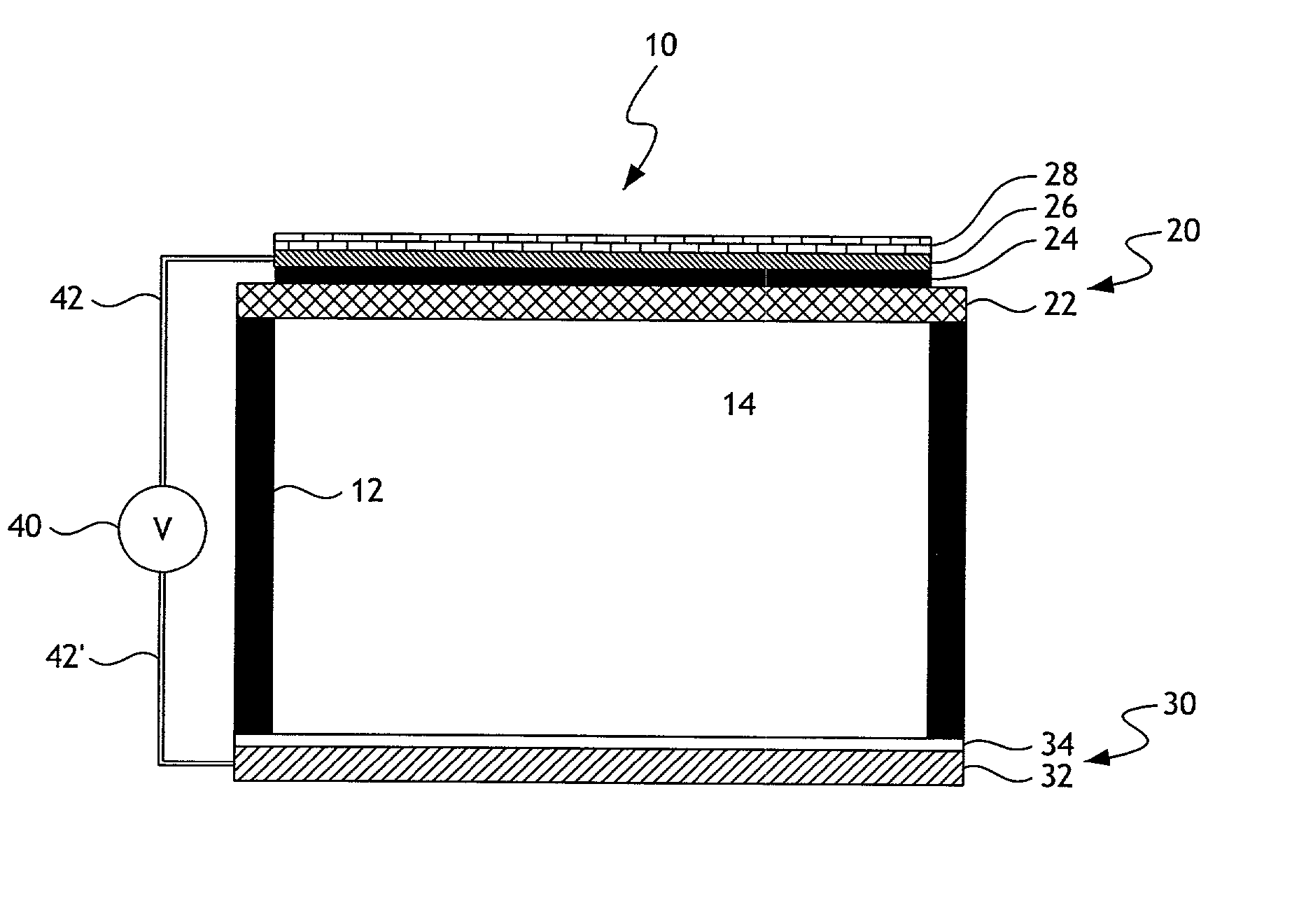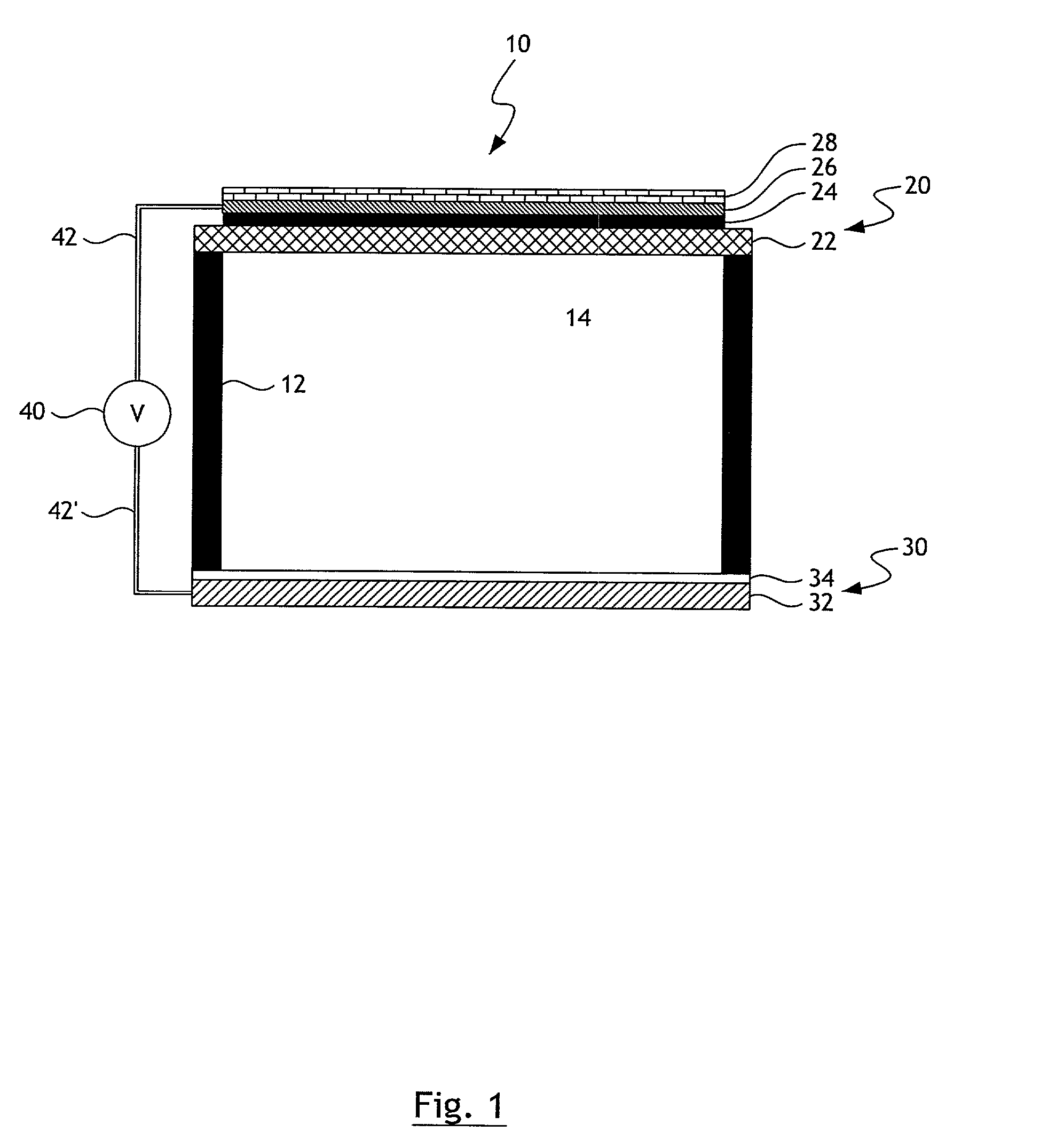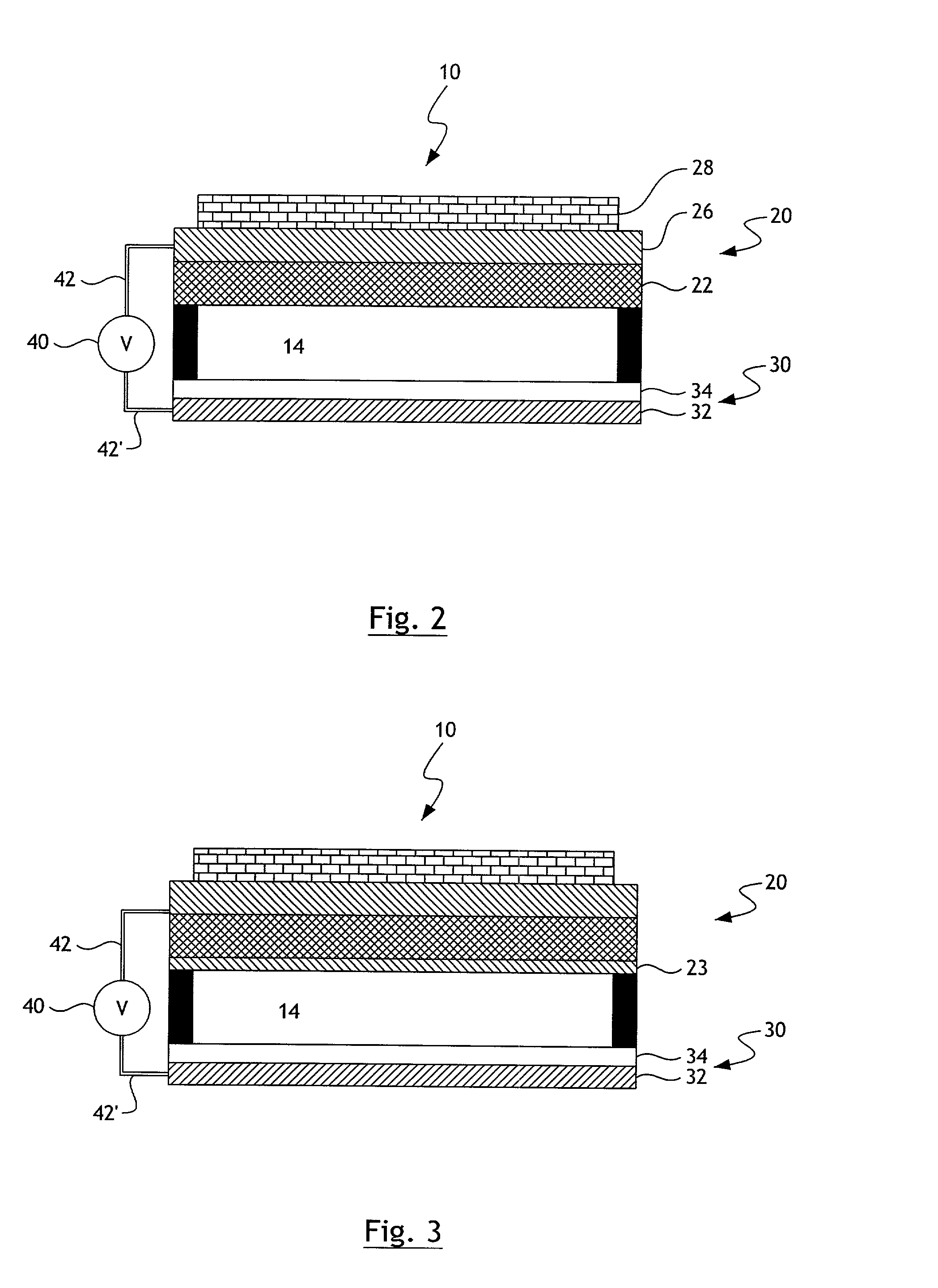Dielectric barrier discharge plasma reactor cell
a plasma reactor and dielectric barrier technology, applied in space heating and ventilation, lighting and heating apparatus, heating types, etc., can solve the problems of contaminated buildings, many of these methods are very expensive, and none can meet all the necessary requirements,
- Summary
- Abstract
- Description
- Claims
- Application Information
AI Technical Summary
Problems solved by technology
Method used
Image
Examples
Embodiment Construction
[0083] Moisture (H.sub.2O) in air O*+H.sub.2O.fwdarw.2OH
[0084] O+O.sub.2+O.sub.2.fwdarw.O.sub.3+O.sub.2
[0085] There are many possible reactions among these radicals and gas components. The following paragraph shows decomposition of toluene and trichlorethane. The disassociated byproducts react further with O, N and H to produce CO, CO.sub.2, NO.sub.x, H.sub.2O and O.sub.3 as discharge byproducts.
2 Trichlorethane (TCA, C.sub.2HCl.sub.3) Toluene (C.sub.6H.sub.5CH.sub.3) decomposition decomposition C.sub.6H.sub.5CH.sub.3 + O .fwdarw. C.sub.6H.sub.5CH.sub.2O + H C.sub.2HCl.sub.3 + e .fwdarw. C.sub.2Cl.sub.3 + H + e C.sub.6H.sub.5CH.sub.3 + O.sub.3 .fwdarw. C.sub.6H.sub.5CHO.sub.2 + H.sub.2O .fwdarw. C.sub.2HCl.sub.2 + Cl + e C.sub.6H.sub.5CH.sub.3 + OH .fwdarw. C.sub.6H.sub.5CH.sub.2 + H.sub.2O .fwdarw. C.sub.2HCl.sub.3 + 2e .fwdarw. C.sub.6H.sub.5CH.sub.3OH .fwdarw. C.sub.2HCl.sub.2 + Cl + 2e .fwdarw. C.sub.2Cl.sub.3 + H + 2e
[0086] The mechanism of decomposition of toxic gas molecules ...
PUM
| Property | Measurement | Unit |
|---|---|---|
| thickness | aaaaa | aaaaa |
| thickness | aaaaa | aaaaa |
| thickness | aaaaa | aaaaa |
Abstract
Description
Claims
Application Information
 Login to View More
Login to View More - R&D
- Intellectual Property
- Life Sciences
- Materials
- Tech Scout
- Unparalleled Data Quality
- Higher Quality Content
- 60% Fewer Hallucinations
Browse by: Latest US Patents, China's latest patents, Technical Efficacy Thesaurus, Application Domain, Technology Topic, Popular Technical Reports.
© 2025 PatSnap. All rights reserved.Legal|Privacy policy|Modern Slavery Act Transparency Statement|Sitemap|About US| Contact US: help@patsnap.com



